LIB 4.4%
Incumbent MP
Rowan Ramsey, since 2007.
Geography
Grey covers the vast majority of the geographical expanse of South Australia. Grey covers South Australia’s borders with Western Australia, the Northern Territory, Queensland and New South Wales. It covers most of the coast of South Australia, including everything west of the Yorke Peninsula. Main towns include Port Pirie, Port Augusta, Port Lincoln, Whyalla, Coober Pedy and Roxby Downs.
History
Grey is an original electorate, having been created in 1903. The seat was first won by the ALP’s Alexander Poynton, who had been elected as a Free Trade MP in 1901, when South Australia elected its parliamentary delegation at large.
Poynton strongly supported conscription and followed Billy Hughes into the Nationalist Party in 1916.
Poynton was defeated by Andrew Lacey in 1922. Lacey held the seat until his defeat by Philip McBride (UAP) in 1931. Lacey went on to win a seat in the South Australian House of Assembly in 1933 and became Leader of the Opposition until 1938.
McBride held Grey for the UAP from 1931 until 1937, when he made a swap with Country Party senator Albert Badman, with Badman winning Grey and McBride taking Badman’s seat in the Senate. McBride held the Senate seat until his defeat in 1943, and then served as Member for Wakefield from 1946 to 1958, serving as a minister in the Menzies government.
Badman held the seat of Grey until 1943, effectively serving as a member of the UAP for his final years after the collapse of the Country Party in South Australia.
In 1943, Badman was defeated by Edgar Russell (ALP). Russell began a 50-year period of the ALP holding Grey except for a single election, and he served as a backbencher until his death in 1963. Jack Mortimer won the seat for the ALP in 1963, but was defeated by Liberal Don Jessop in 1966. Jessop only held the seat for one term, losing to Laurie Wallis in 1969. Jessop then won a seat in the Senate in 1970 and served there until 1987.
Wallis held Grey from 1969 to 1983, when he retired. He was succeeded by Lloyd O’Neil, who held the seat for the ALP from 1983 until his retirement in 1993.
The redistribution before the 1993 had expanded Grey to include rural areas to the west of Port Pirie and Port Augusta, after the seat had been limited to the immediate coastal strip for decades. This improved the position of the Liberal Party, and Barry Wakelin won the seat off the ALP at the 1993 election.
Wakelin held the seat until 2007, when he retired and was succeeded by Rowan Ramsey.
Candidates
- Andrew Melville-Smith (Greens)
- Tauto Sainsbury (Labor)
- Rowan Ramsey (Liberal) – Member for Grey since 2007.
- Sylvia Holland (Family First)
Political situation
The influence of Labor-voting towns has waned in Grey, yet it is not wise to ignore the recent history of the ALP holding this seat. The huge swing to the ALP in 2007 puts this seat in the marginal column, but after three years in Parliament Ramsey should have strengthened his position, making it hard for the ALP to manage the remaining 4.4% swing needed to win.
2007 result
| Candidate | Party | Votes | % | Swing |
| Rowan Ramsey | LIB | 42,132 | 47.26 | -9.24 |
| Karin Bolton | ALP | 34,466 | 38.66 | +8.35 |
| Mal Holland | FF | 4,009 | 4.50 | -0.55 |
| Rosalie Garland | GRN | 3,669 | 4.12 | +0.82 |
| Wilbur Klein | NAT | 2,725 | 3.06 | +3.06 |
| Gil Robertson | DEM | 1,094 | 1.23 | -1.11 |
| David Wright | IND | 1,050 | 1.18 | +1.18 |
2007 two-candidate-preferred result
| Candidate | Party | Votes | % | Swing |
| Rowan Ramsey | LIB | 48,522 | 54.43 | -9.39 |
| Karin Bolton | ALP | 40,623 | 45.57 | +9.39 |
Booth breakdown
Due to the large number of local government areas in Grey, I have divided booths into groups of LGAs. Also note that the vast majority of the land covered by Grey has no local government, except for the isolated LGAs of Coober Pedy and Roxby Downs.
- Port Lincoln – Port Lincoln, Lower Eyre Peninsula, Tumby Bay
- Whyalla – Whyalla
- Central – Barunga West, Copper Coast, Wakefield
- Port Pirie – Port Pirie
- Yorke Peninsula – Yorke Peninsula
- West Coast – Cleve, Ceduna, Elliston, Franklin Harbour, Kimba, Le Hunte, Streaky Bay
- Port Augusta – Port Augusta
- East – Goyder, Northern Areas, Peterborough
- Outback – Coober Pedy, Roxby Downs, Unincorporated areas
- North-East – Flinders Ranges, Mount Remarkable, Orroroo Carrieton
The ALP won majorities in the major towns of Whyalla, Port Pirie and Port Augusta, and won a slim majority in the Outback. Outside of these areas the ALP only won four booths: both booths in Wallaroo, one booth in Port Lincoln and the Peterborough booth.
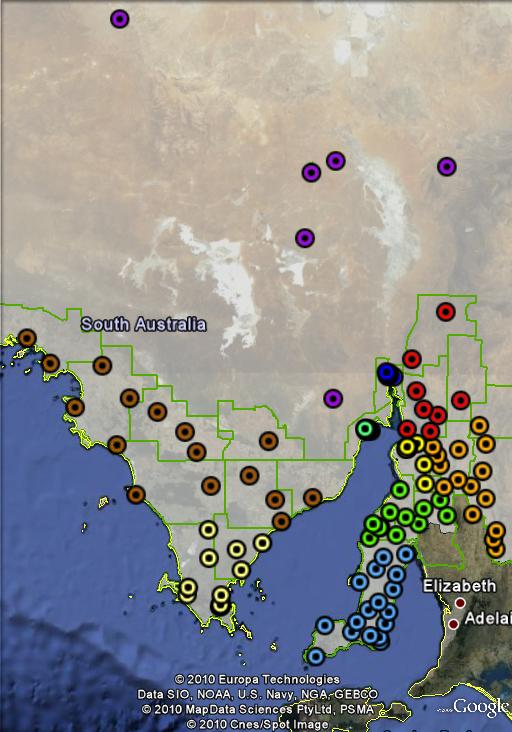
| Voter group | GRN % | FF % | LIB 2CP % | Total votes | % of votes |
| Port Lincoln | 4.55 | 4.46 | 64.16 | 11,506 | 12.91 |
| Whyalla | 4.23 | 5.17 | 34.88 | 11,237 | 12.61 |
| Central | 3.50 | 4.85 | 57.73 | 10,054 | 11.28 |
| Port Pirie | 3.45 | 4.15 | 41.00 | 9,219 | 10.34 |
| Yorke Peninsula | 3.43 | 5.39 | 66.13 | 6,831 | 7.66 |
| West Coast | 3.15 | 3.91 | 75.29 | 6,581 | 7.38 |
| Port Augusta | 4.06 | 4.53 | 40.09 | 6,483 | 7.27 |
| East | 4.16 | 4.42 | 61.48 | 6,113 | 6.86 |
| Outback | 4.43 | 4.46 | 49.17 | 3,992 | 4.48 |
| North-East | 4.25 | 3.25 | 65.59 | 3,014 | 3.38 |
| Other votes | 5.22 | 4.10 | 55.74 | 14,115 | 15.83 |
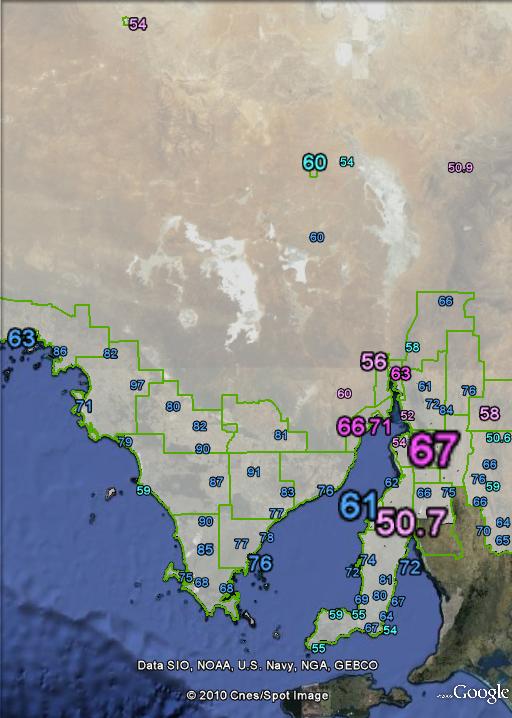
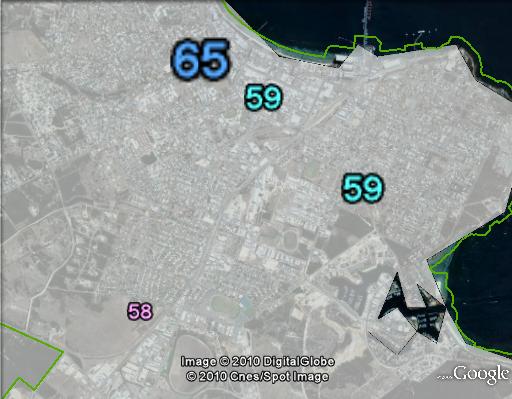
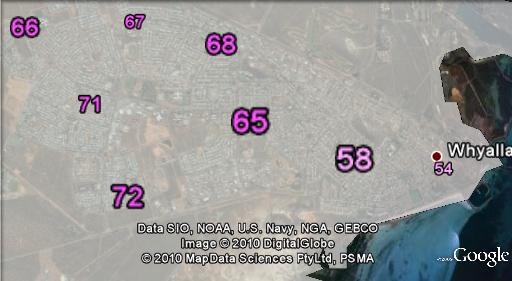
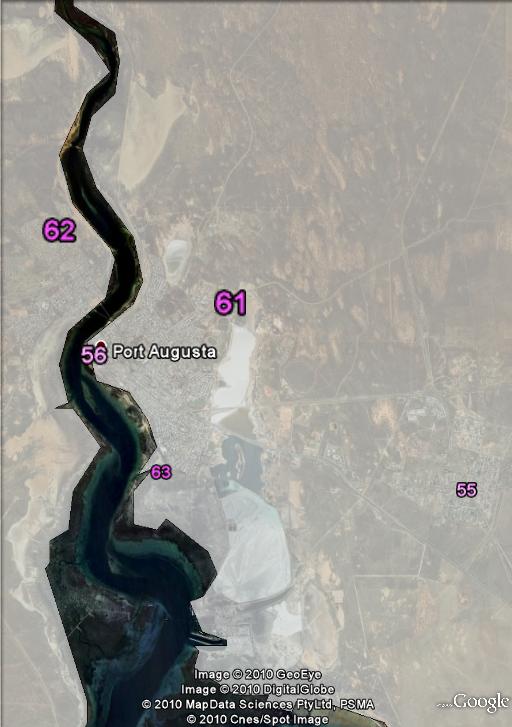
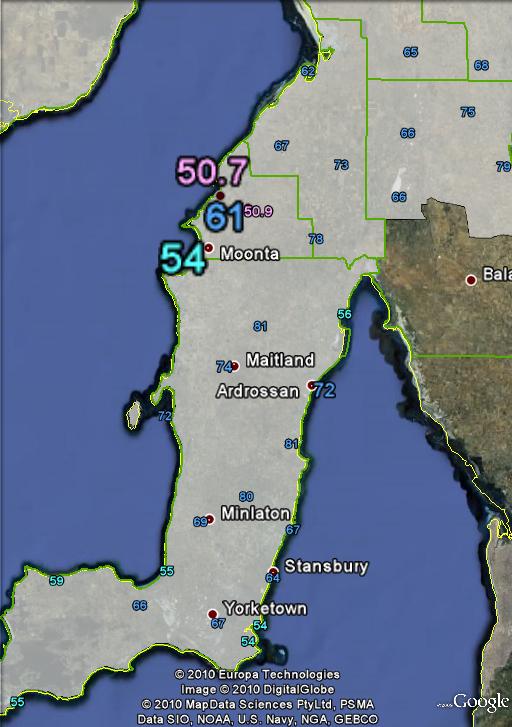
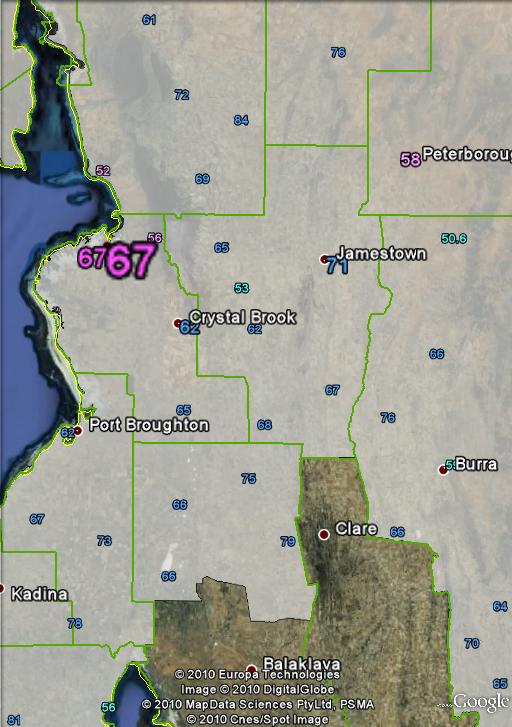
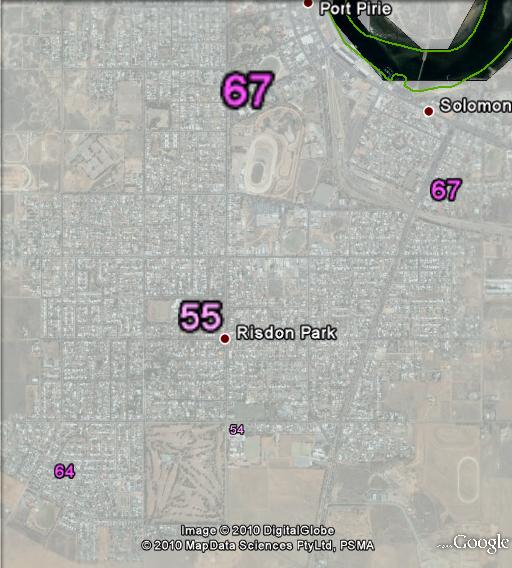


There was a big swing last time. This is the kind of rural seat that would fall with the retirement of the sitting member. If the new MP has done his work the Libs will probably be safe.
Hmm, the quarterly state-by-state Newspoll numbers suggest a 7% swing to Labor in SA, which would suggest this seat will be competitive, but you’re probably right Hamish, especially since the Labor vote is so concentrated in the industrial cities, it will be hard for them to get a big enough extra swing.
I do remember this seat attracted a lot of attention in 1993.
What about the Poochera booth, 97%, that’s incredible for a booth of 88 people
I have a couple of questions about the differences between state and federal results especially in mining towns. I think the liberals will win this seat comfortable but i think it will be interesting to see how it reacts compared to the national trend depending on the stronger factor. My practice knowledge is very limited so i welcome any enlightenment.
I see by looking at somewhere like Roxby Downs. I cant remember where but i heard a while ago that it had a really high population turnover. Looking at the results at the last federal election the liberals got aprox 60 percent of the vote despite a retiring member and a 9 percent swing. However at the last state election in Giles the liberals vote was only 53.6 and before that in 2006 Labor had won a plurality of the 2pp vote.
Is there 1. an X factor in some of these mining towns by constant changing of the population which i believe could be a small factor. 2 There is a vote for the party that holds the seat; one safe Labor, One safe Liberal. 3. some demographic groups vote for whoever is the incumbent government as the liberals in 2007 and Labor in 2010 at the state level. 4. they just like incumbents in which case the liberal vote will go back up to 2004 levels(2001 more likely).
Of course other booths could easily act differently but i wont go in details so im not waffling too much more. This same trend also applies to some smaller towns like Iron Knob an Woomera as well as areas of cities such as Whyalla Central East. i also know that others have gone the other way as well such as Quorn and Coober Pedy. If that is replicated they would probably cancel each other out. But if Quorn changes because there was a swing against a government and if the federal governments vote stays stable then the towns like Quorn would not counter balance it. The other state seats are one marginal and one safe liberal. They both seem to show a general trend towards libs at the last state election but not so much in 2006. The Wallaroo booths are interesting as the 2007 results is somewhere between the 2006 and 2010 state results.
So many variables 🙂
Tauto Sansbury is the ALP candidate here.
Also believe I’ve seen a report that Andrew Melville-Smith is the Greens candidate.
As some one pointed out to me……..in a similar forum Labor cannot win unless they get an incredible vote in the 3 industrial cities I’d say over 70%. the iron triangle towns are declining in population….. but an improvement in the vote is possible…. see the results in the last state election across Grey…… I suspect better than 55/45 ……. a sitting member in this sort of seat tends to consolidate support
I suspect even on the current boundaries Mr O’neill would have retained the seat 1983 to 1993
Family First candidate Sylvia Holland ran for One Nation in 2001, interestingly.
My prediction: Liberal retain, 2% swing to them.